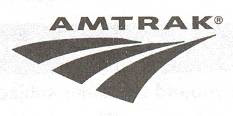This imposing structure was built in 1925 by the Chesapeake and Ohio Railway to serve not only the city of Ashland KY, but also as a way station for all major passenger trains traveling along its mainline. It also served as a terminous for local trains which left Ashland and traveled up the Big Sandy Valley and over towards a connection with the Clinchfield Railroad at Elkhorn KY.
But it was as a way station that it was probably best known. The major passenger trains heading west stopped here and were often "split-up" into 3 different sections, each headed a different direction, before resuming their journey. One section, normally the longest, continued out of Ashland toward Cincinnati OH. Here it would connect with the Indianapolis IN and Chicago IL-bound James Whitcomb Riley of the Big Four (or New York Central) line. A second section, would head north across the Ohio River for Columbus, & Toldeo OH, and ultimately Detroit MI. A third section would head due west over trackage now removed, and end in Louisville KY. Trains arriving from these three Western destinations were combined in Ashland before they headed East.
Given the importance of this station for the Chesapeake and Ohio Railway, it is not surprising that it was located within the floodwall that the Army Corps of Engineers built to protect Ashland from Ohio River flooding. It was reached through a "WYE" connection with the mainline that ran along the Ohio River's edge, outside the floodwall.
Today, this station is no longer an active station.
 The tracks leading to it have been removed, and a local bank is now the owner and occupier. While Amtrak does stop at Ashland KY, it uses the old Chesapeke and Ohio freight station located just outside of the flood wall.
The tracks leading to it have been removed, and a local bank is now the owner and occupier. While Amtrak does stop at Ashland KY, it uses the old Chesapeke and Ohio freight station located just outside of the flood wall.Yet in its time, the station pictured above was an important way-station on the C&O. And given that trains were consolidated and split up at this location, it was a station where you would be able to sit and reflect upon where you had been and where you were ultimately going, both on the train, and in life.




No comments:
Post a Comment